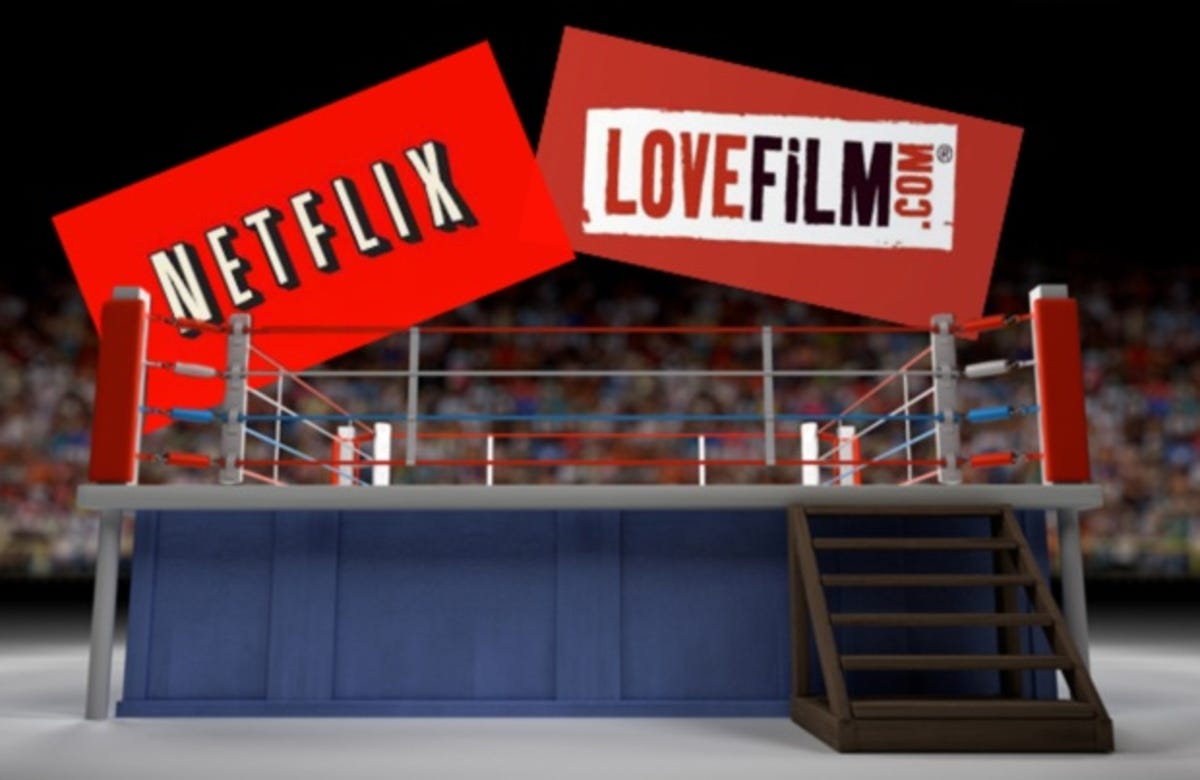
In the red corner, the reigning British champ of online movie streaming, Lovefilm. In the blue corner, the heavyweight challenger from the States, Netflix. These two bruisers have been talking a good fight, but the time has come to see which is the true champ.
Round one went to Netflix, which landed its first jab, launching a single subscription package that lets users gorge themselves on a mixture of films and TV shows. Lovefilm came off the ropes with an upper cut — or more accurately, an undercut — offering its streaming service for £1 a month less than Netflix.
With the two squaring up, we paid up for ringside seats to watch the pair slug it out. Read on for our round-by-round score card.
Costs and subscription options
The pricing of Netflix couldn’t be much simpler. Unlike in the US, where you also have the option of renting DVDs and Blu-ray discs by post, we’re only offered the streaming service in the UK. This has a flat fee of £5.99 per month, giving you access to all the movies and TV shows in its online catalogue.
Meanwhile, Lovefilm is offering a streaming-only option for £4.99 — a quid cheaper than Netflix. Lovefilm also operates a disc-by-post service in the UK, so there are various subscription packages available. The postage-only service costs £5.99 (which includes two free hours of the streaming service), but you can have both postage and streaming together for £7.99. Games can be added to the package for a total of £11.22 per month.
In this review, we’re only looking at Lovefilm’s streaming as it’s the option that most closely matches that of Netflix.
The streaming package grants you access to a portion of Lovefilm’s online library — the latest premium titles are only available on a pay-per-view basis for either £3.49 or £2.49, with a 48-hour rental period. These are movies the studios have put in their pay-per-view ‘window’, so they won’t be on Netflix at all.
One thing we really like about both services is that they don’t tie you into a contract. You pay per month and if you want to cancel — so long as you do so before the end of the month — you won’t be charged again. Both sites make it easy to cancel. Unlike some services that demand you send a long-hand letter by carrier pigeon before cancelling your account, you just log into your Netflix or Lovefilm account details and click a button. There seem to be no sharp practices at work.
Ease of use
The web interfaces for both services have their strengths and weaknesses and we weren’t overly fond of either. The Netflix interface tries to simplify things too much by relying on its matching engine to suggest stuff for you to watch.
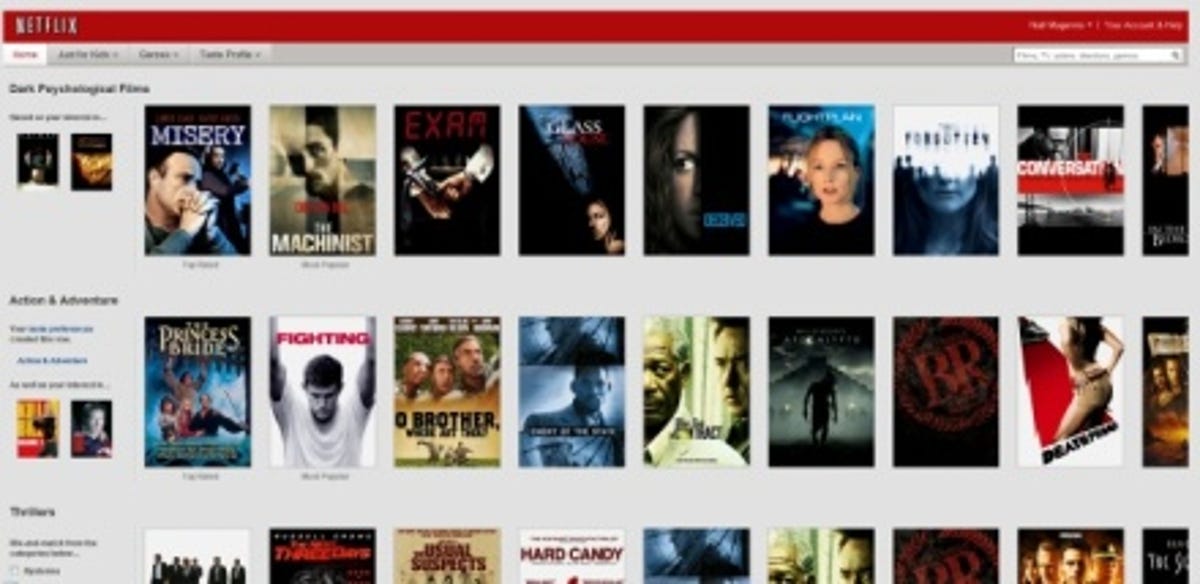

There’s no way to simply browse the Netflix catalogue — you have to rely on specific searches.
The problem is that due to the currently limited library, a lot of the categories are filled with the same titles. For example, Derailed appeared both in our Psychological Suspense Films and Violent Thrillers suggestions. It feels like the library is being hidden from you as there’s no way to simply browse through it. Instead, you have to perform direct searches to find what you want.
Lovefilm, on the other hand, makes it easy to browse its library. However, it annoyingly lumps everything together, so discs by post, pay-per-view movies and streaming titles all show up in your searches.
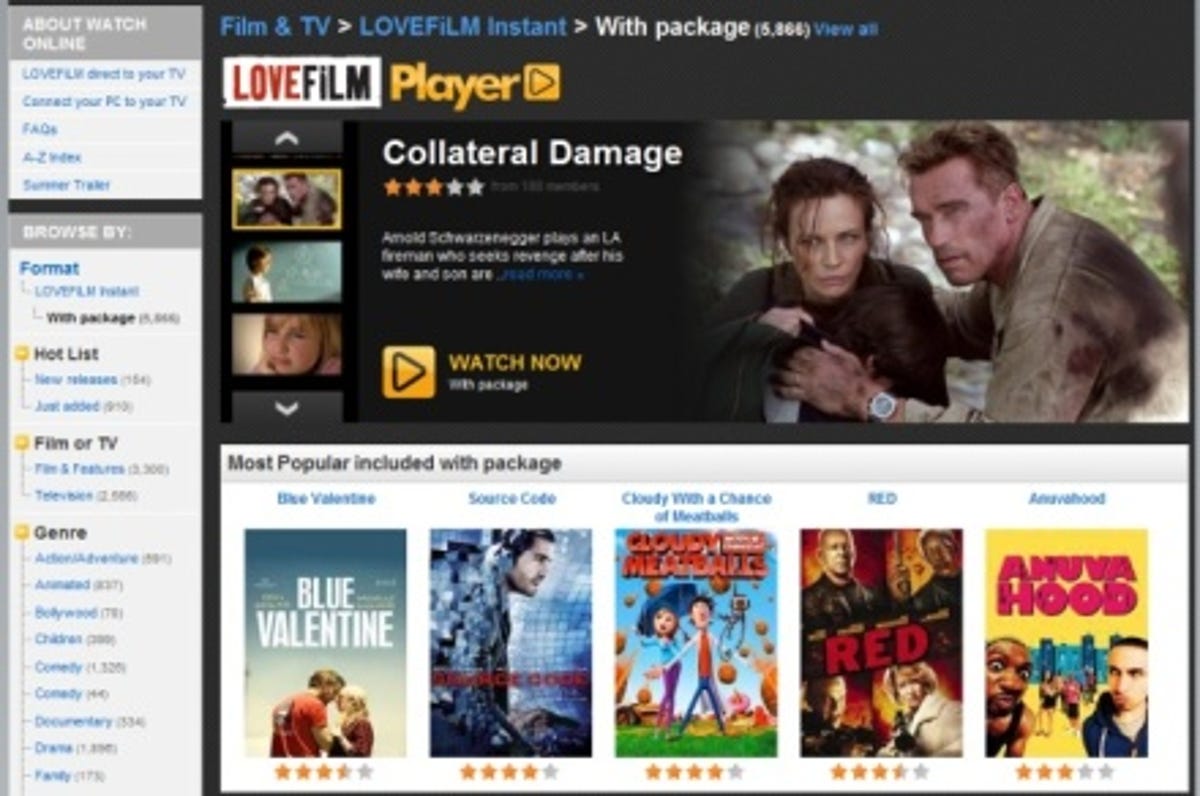

Lovefilm frustratingly lumps the discs-by-post and pay-per-views together with your streaming-only search results.
It means every time you do a search you have to wait for the results, then click the With Package option to see which you have access to. Also, it doesn’t group TV shows together by series, so you have to look for each episode individually, which is a ridiculous oversight.
Streaming quality
The good news is that both services seem to have plenty of server capacity, so you don’t get five minutes into a film and then have to wait for it to buffer for 30 seconds before it continues to play. We trialled them on an O2 ADSL broadband line that runs at a healthy 18Mbps. That may be a faster connection than many people have access to, but what it shows is that if there is a bottleneck in the system, it’s going to be your own broadband connection rather than the Netflix or Lovefilm servers.
When it comes to picture quality, there is a clear winner between the two — Netflix. In part, this is because Netflix is the only one to offer HD streams in either 720p or 1080p formats on some of its content. These streams often include surround sound. Even its standard-definition streams look pretty crisp and sharp and are largely on a par with what you’d expect from a DVD.


The higher resolution Netflix comes out on top in the image quality stakes (click image to enlarge), as seen on our screenshots of Bangkok Dangerous on Netflix…
Lovefilm’s image quality, on the other hand, is less impressive. Firstly, it only offers standard-definition videos and they struggle to even deliver DVD-like picture quality — partly because its streams are limited to 2Mbps.


…and on the standard-resolution Lovefilm (click image to enlarge).
Regardless of whether you’re watching on a TV or a PC, the Lovefilm streams look less detailed than those of Netflix. Lovefilm also sometimes crops the aspect ratios of movies (see our Tron screenshots).


Tron in all its neon glory on Netflix…
You might not mind this as it means the film fills more of the screen, but it also loses some of the original image at the sides, giving you a less cinematic experience.


…and cropped on Lovefilm.
Movie libraries
Sadly, neither has an amazing catalogue of content. Of the top 10 rated movies on IMDb, Dark Knight is the only one in the Lovefilm streaming library and none make it into Netflix. If you’re a movie buff, or watch loads of TV, then it’s highly likely that you’ll have seen much of the best content in their online libraries.
That said, there are distinct differences between the two. Netflix leans towards the best TV content with a less impressive line-up of movies. You’ll find shows like Breaking Bad, Dexter, Prison Break and 24. However, the movie library is padded out with too many straight-to-DVD releases.
Lovefilm is the opposite. It has a larger, more varied and more up-to-date library of movies, but it doesn’t offer the same breadth of TV content. Movies available as part of the streaming package include relatively recent titles such as Source Code, Unknown and Animal Kingdom. However, although the TV offering is improving — you’ll find shows like Lost and Cougar Town in there — it’s not as strong as Netflix.
Access via TVs, consoles and mobile devices
Both companies know that the big market for movie streaming is not necessarily on computers and laptops, but through other devices like consoles, media streamers, connected Blu-ray players and smart TVs.
Lovefilm has deals with Samsung, Sony and LG, so the service is available on most of the latest smart TVs and Internet-connected Blu-ray players from those brands. You can also access it via the PlayStation 3 and the Xbox 360 if you have an Xbox Live Gold account.
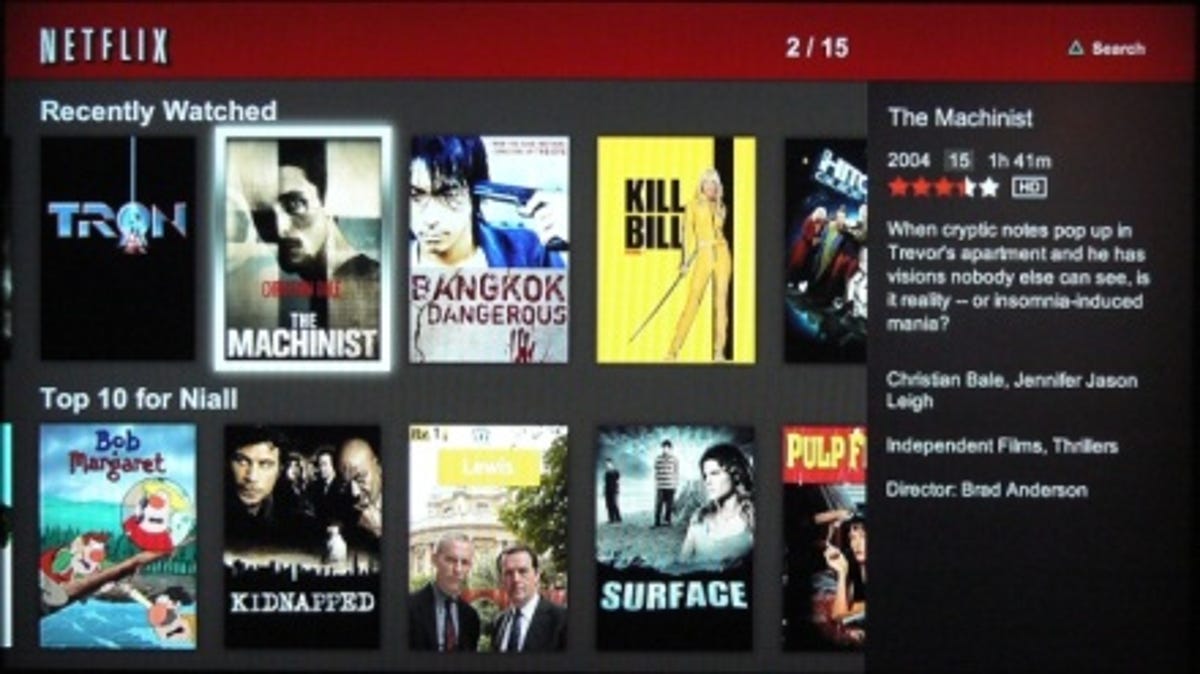

Here’s the Netflix interface as viewed on a PlayStation 3…
When it comes to accessing each service via the PS3, there’s little to separate the user experience of the two — they’re both neatly designed and fun to use. They make good use of thumbnails and large icons, and on the whole rely on suggestion lists rather than forcing you to constantly perform searches.
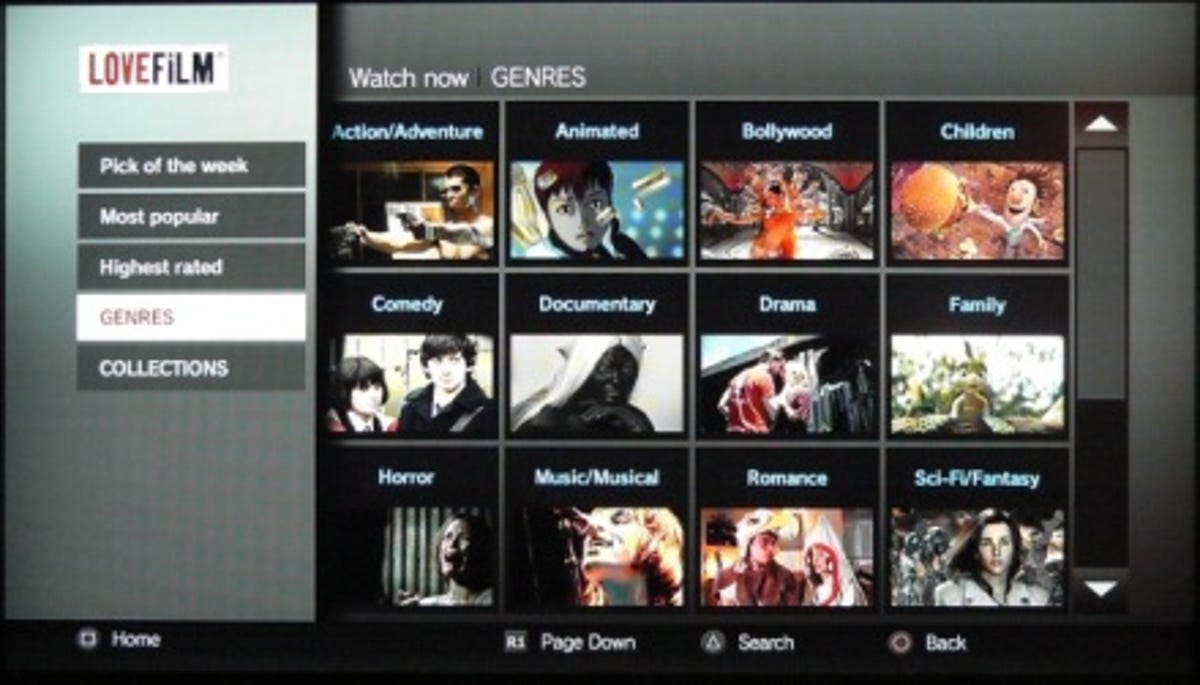

…and here’s Lovefilm on the PS3.
Some media players, such as the latest WDTV Live, also support the service. It’s available on the iPad but is currently not on the iPhone. The Android and Windows Phone apps don’t support the streaming service either, which is annoying.
Netflix betters Lovefilm on the console front because it supports the Nintendo Wii, alongside the PS3 and Xbox 360. It’s also available on the iPhone as well as the iPad. The Android app supports streaming too. However, although Windows Phone is supported in the US, the app is not listed in the UK Marketplace at present. Also, Netflix currently has less support on the TV front, with only Samsung and LG offering apps for the service on their smart TVs and Blu-ray players.
Acetrax, Blinkbox and iTunes
There are several other streaming services around, although they tend to focus on renting and buying rather than subscription packages. For example, Acetrax offers movie rentals that can be streamed over the web via a PC or Mac’s web browser. It also sells films for download. The service is also supported on apps in number of smart TVs including models from LG, Panasonic, Samsung, Philips and Toshiba. Movies cost between 99p and £4.49 to rent. The streaming quality is reasonably good but the library is patchy.
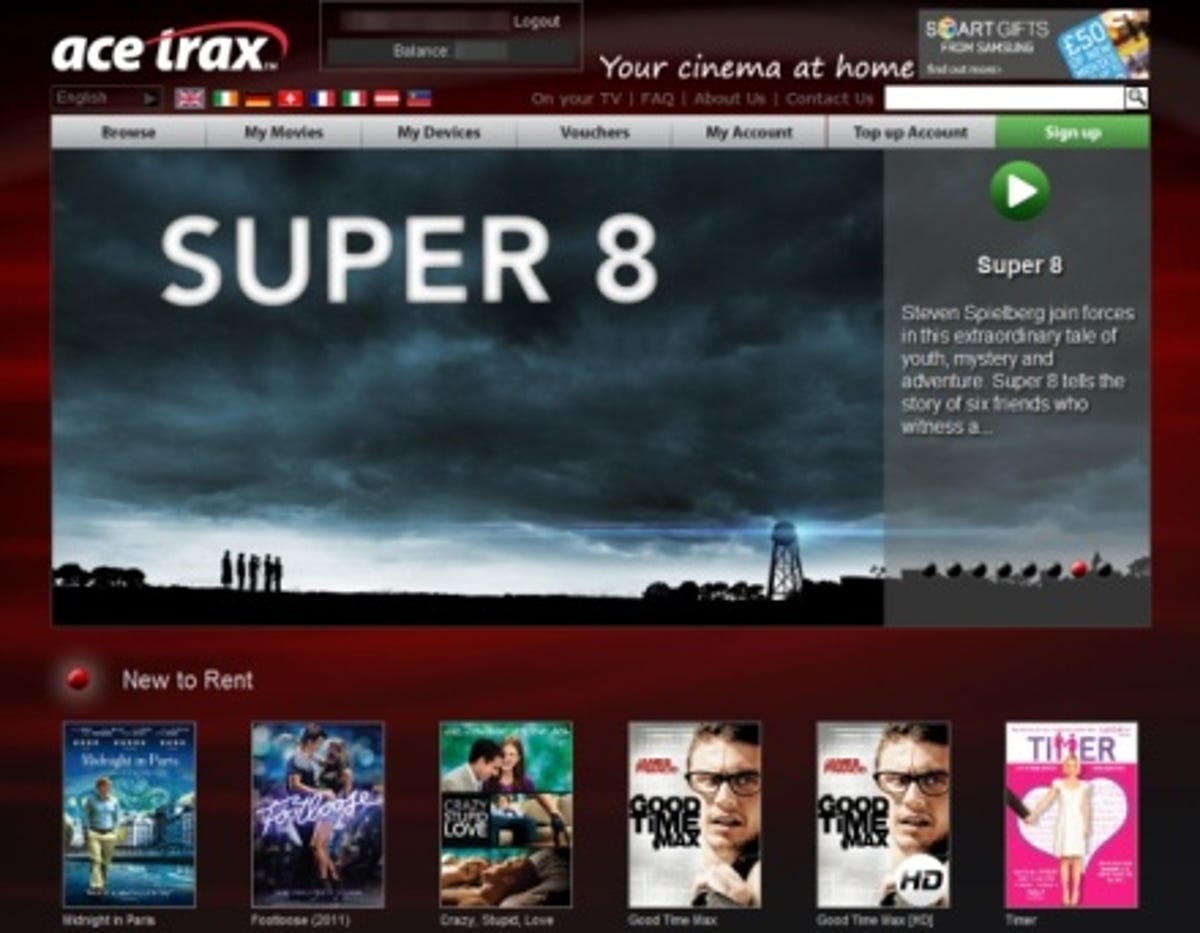

Acetrax represents a non-subscription alternative to Netflix and Lovefilm.
Another option is Blinkbox, which Tesco has a big stake in. It offers a lot of TV shows and some movies for free, which are supported by ads, much like normal commercial TV channels. However, the service also includes premium movies and TV shows that you can rent or buy, with prices starting at 39p for TV episodes and 99p for movies.
And we can’t overlook Apple’s iTunes, either. With iTunes, you can buy and download TV shows and movies, or alternatively rent and stream them. The latest films cost £3.99 to rent and £9.99 to buy in standard definition.
Conclusion
The presentation and streaming quality of Netflix is better, especially if your preference is for catching up with slightly older TV shows. However, its movie library is poor, offering the types of films you’re likely to see on sale at your local petrol station. Lovefilm, on the other hand, suffers from less-than-ideal picture quality and its TV selection is worse than its rival.
Lovefilm’s strength, however, is its movie library, which has a greater breadth than Netflix. This is true not just because it has newer releases, but also since it offers a more diverse range of quality older movies.
Unfortunately, we don’t think either Netflix or Lovefilm represent an ideal option for film fans at present. Neither service is going to replace a premium package like Sky Movies — with low monthly fees, that’s perhaps not surprising — so you’ll need to weigh up whether the patchy content represents enough value. But the ease of cancellation means you can at least give them a test drive without being locked into a long-term subscription.




